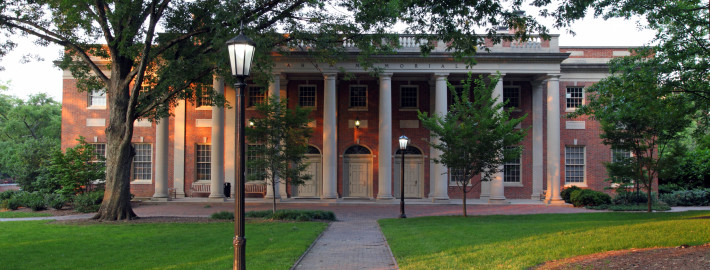Yes – Even Top-Tier Colleges Play the Rankings Game
After years of preparation, you now find that you’re finally in the market for a college. You want to determine which colleges are right for you because you’ll need to apply to them soon. Naturally, you’ll look for publications to guide you, just as your parents might refer to Consumer Reports or Motor Trends magazines if they were in the market for a new car. In fact, there are quite a few publications that annually calculate and publish rankings for American colleges and universities, including those listed below:
- U.S. News & World Report
- Forbes
- Princeton Review
- Money
- Barron’s
- College Atlas
- The Economist
- Times Higher Education
If you’ve been college shopping, then you know that U.S. News & World Report publishes the most widely viewed annual edition of college rankings, one that’s perceived by many to be “authoritative”. The magazine has been calculating college rankings for decades because this enables them gain new subscribers, cross-sell their other publications, and earn a return on the College Edition itself.
At IvySelect, we find that college rankings can be useful to our clients as data sources. They’re handy tools for accessing metrics about and descriptions of individual schools. However, as a college admissions consulting firm specializing in the Ivy League and other elite schools, we advise clients that the best way to select colleges is to ignore rankings. Instead, you should, with the guidance of your IvySelect counselor, rely on your own analysis of schools. Then, together with your counselor, select 12 or 13 schools as targets based on how well they fit your personal criteria, including your goals, skills, and preferences.
We advise you, however, to take college rankings with a grain of salt as they’re easy to manipulate, and most colleges do exactly that one way or another, including some of the best schools in the country.
There are a number of ways in which a college can “play” the rankings game, starting with the obvious — they can submit false data. Such overt acts of fraud are rare and are usually detected and reported in the media. However, there are more discreet ways to improve a school’s rank. This is possible because ranking providers don’t perform a quality assurance function. They just accept and use the data that they’re given.
The ranking services are businesses and, as such, they find it unprofitable to question the sources of their profits. But what is the rationale for colleges? Don’t people look to them as models of ethical behavior? As noted by Gary Morson and Morton Shapiro in a recent article in the Chicago Tribune, “If your peers all exaggerate, and you do not, then you in fact mislead, since the value of these data is mainly comparative.” This is a rationale to mislead on a silver platter.
One of the most critical data elements in the college rankings process, not only at U.S. News but all of the other sources, is the admission rate, and, specifically, the degree of selectivity thereof. A highly selective school is able to charge tuition and fees that far exceed those of a school considered to be among the least selective or an “open enrollment” school. The calculation should simply be the number of admitted students divided by the total number of applicants. Here are a few of the creative ways that schools can engineer their data to effectively lower their admission rate:
- Reporting as an actual application the preliminary response (e.g. postcard or click) that is supposed to be merely an expression of interest in obtaining additional information. This raises the denominator and lowers the rate.
- Delaying some admissions from the fall to the spring semester or offering students a guaranteed transfer at the beginning of their sophomore year. These count as rejections, not as admissions, so they raise the denominator and lower the numerator.
- Finagling the wait list in advance of the decision date so that excellent students who may be inclined to turn down an offer are given an offer only if they agree in advance to accept it. These prevent the numerator from rising.
Schools can also easily fudge other factors that are used in rankings calculations if they are so inclined. A few of these are discussed below:
- Test Scores – The trend in the last few years towards test-optional admissions at first appears to be a gesture toward those who don’t test well or are unable to afford test preparation materials and courses. It is all that, but, in some cases, it’s also a way to raise average test score data. If submitting scores is optional, it follows that only those applicants who have received high scores will submit them. This provides the school with an artificially high test score average to submit to the rankings providers.
- Graduation Rate – This calculation should be simply the number of students who graduate divided by the number who started out with that same cohort. The number of who graduate is a widely published number. However, the school determines what is used as the denominator. The later they take a snapshot, the better the graduation rate will be. So the start date can range from the number of students accepting offers in May, the number who showed up in September, the number who stayed one month, one semester, or all of freshman year. The choice makes a substantial difference in the graduation rate.
- Reputation – Since something as esoteric as reputation can’t be determined mathematically, it is assessed by means of a survey of college administrators to gather their opinions regarding other schools in their category and region, some of which are their direct competitors. College administrators say that and may truly believe that they don’t care about or pay attention to rankings, but this is undoubtedly not true, so the temptation to be critical of competitors is obvious. Administrators may also be tempted to collude with the administrators of other schools to raise both of their rankings.
- Alumni – Giving to one’s alma mater is perceived as a statement that the alumni’s experience at the school was positive. However, the average amount that alumni donate is not factored into the measure. Hence, a school can conduct a fund raising drive that communicates strongly that the amount that alumni donate is not important, that $5 or $10 is just fine. The result is likely to raise the alumni giving rate even though the total amount donated may have declined.
Your IvySelect college admissions counselor will help you move beyond the rankings. We spend time with you to learn your plans, profile, and preferences. With this information, we help you identify those colleges that fit you best and, in so doing, we take the pain out of the college selection process. You’ll be confident that your targeted colleges are all great matches for you no matter where they may be ranked by a magazine.





